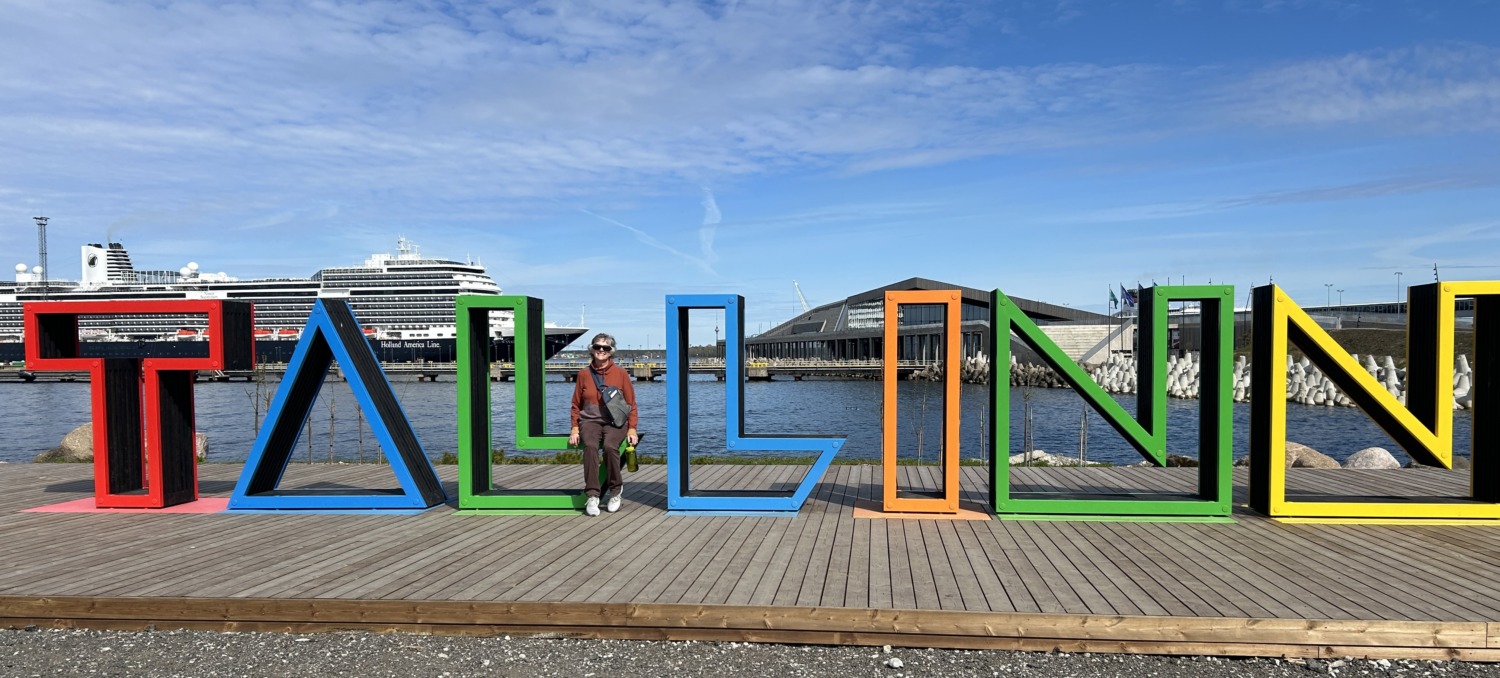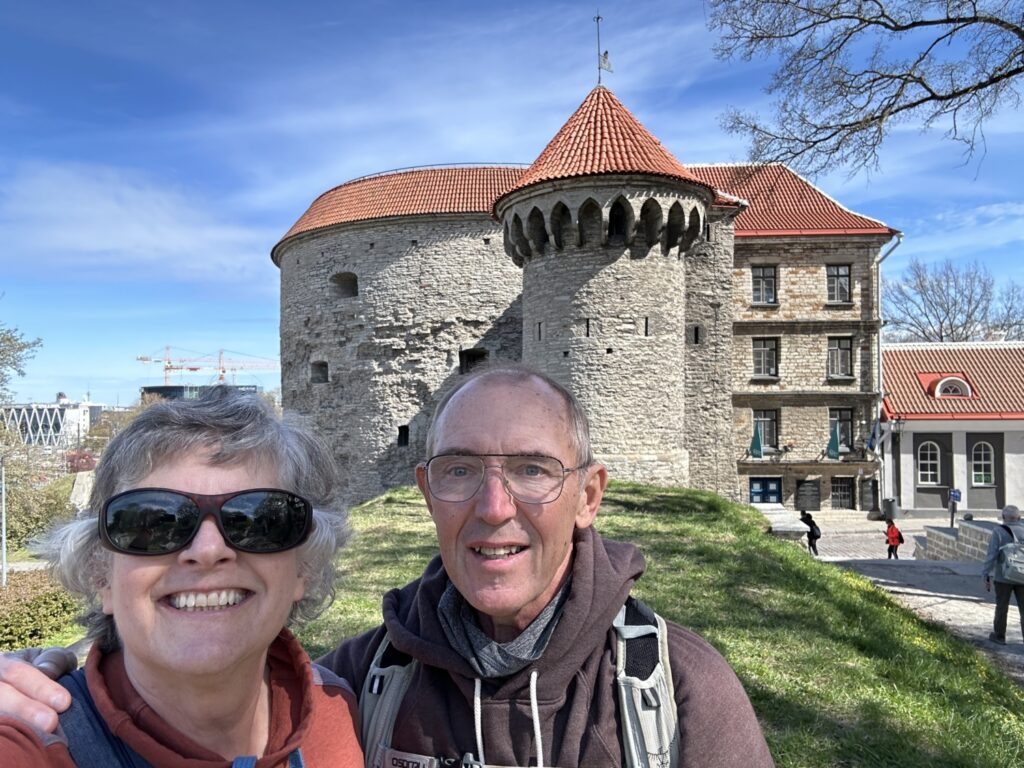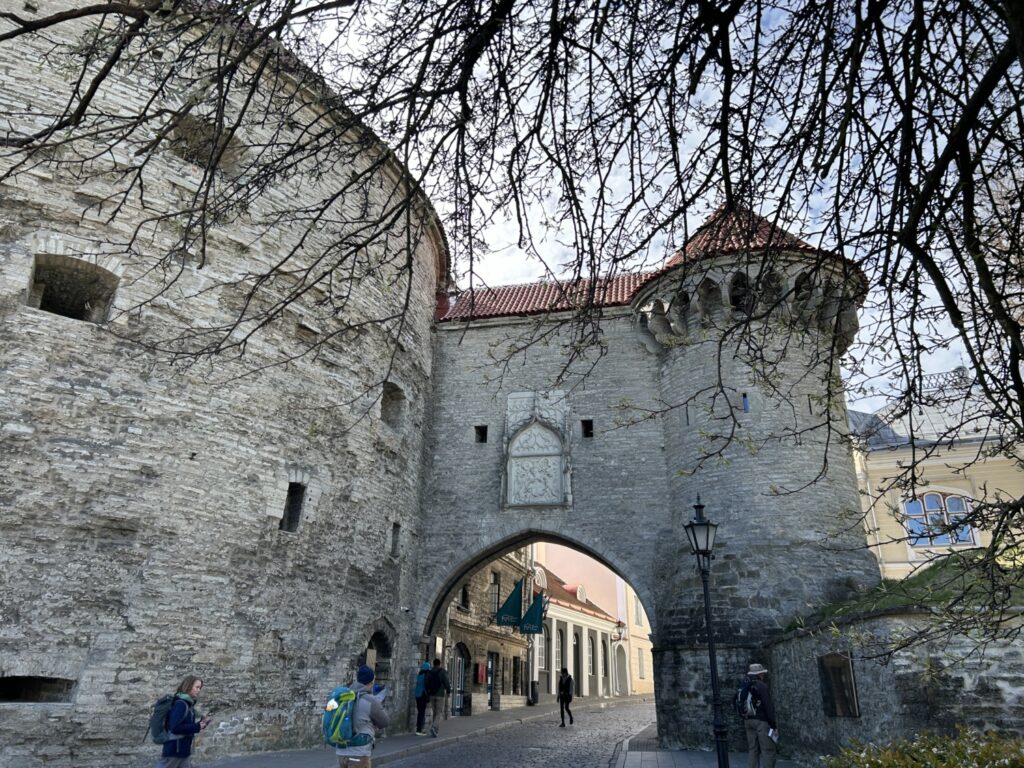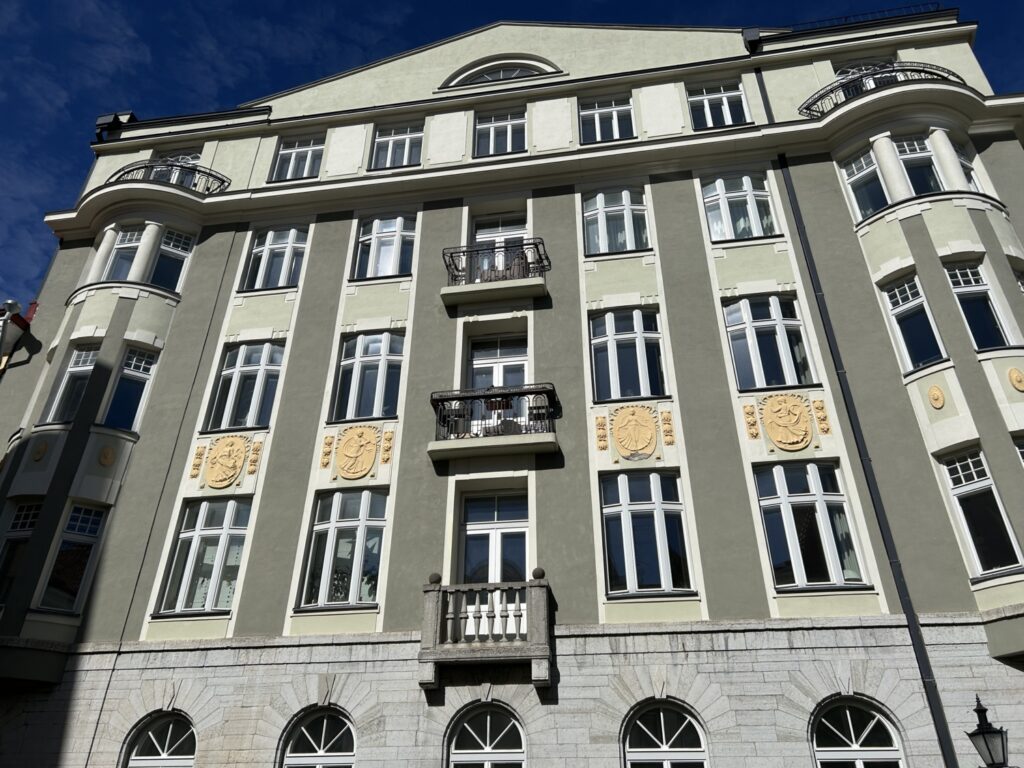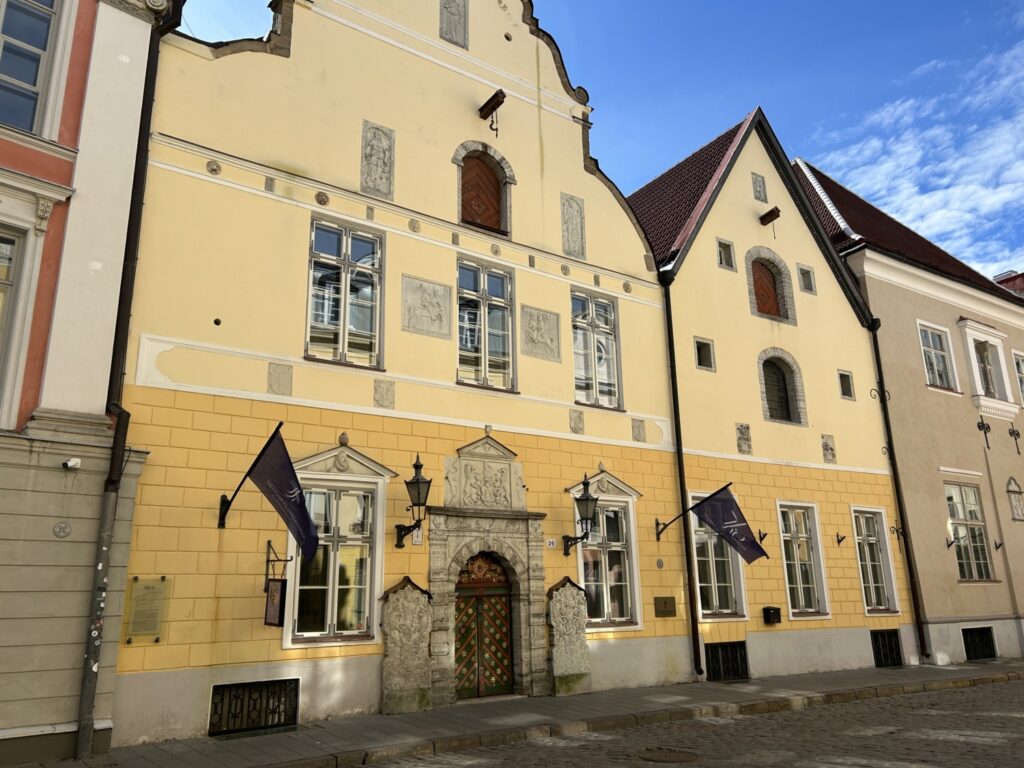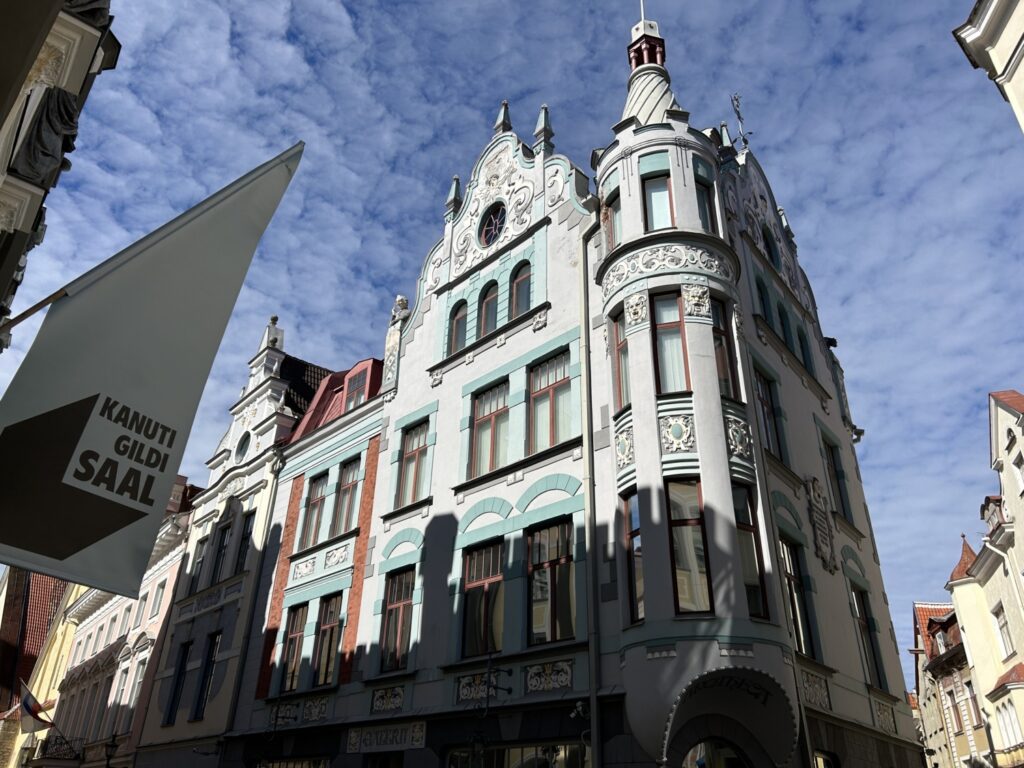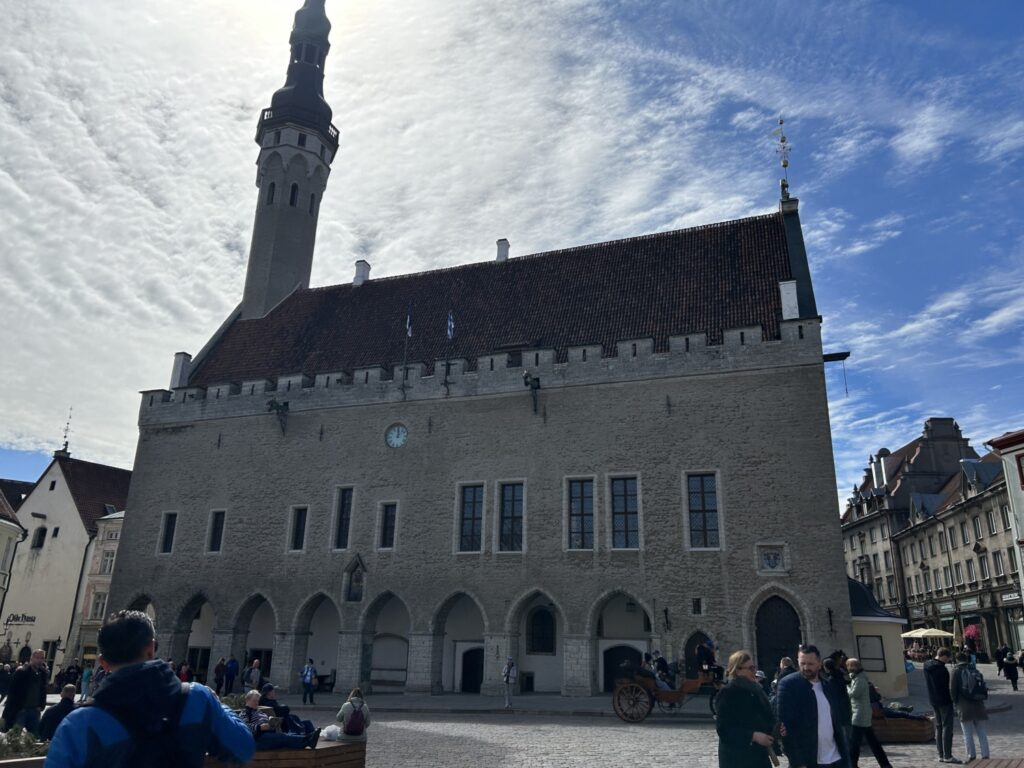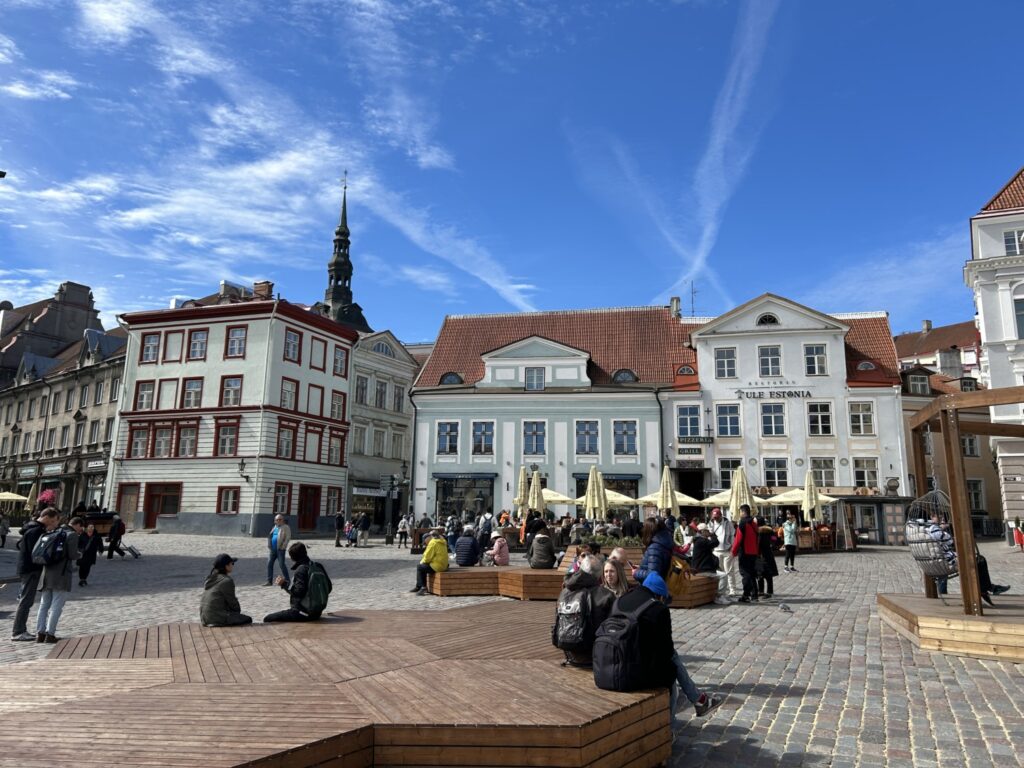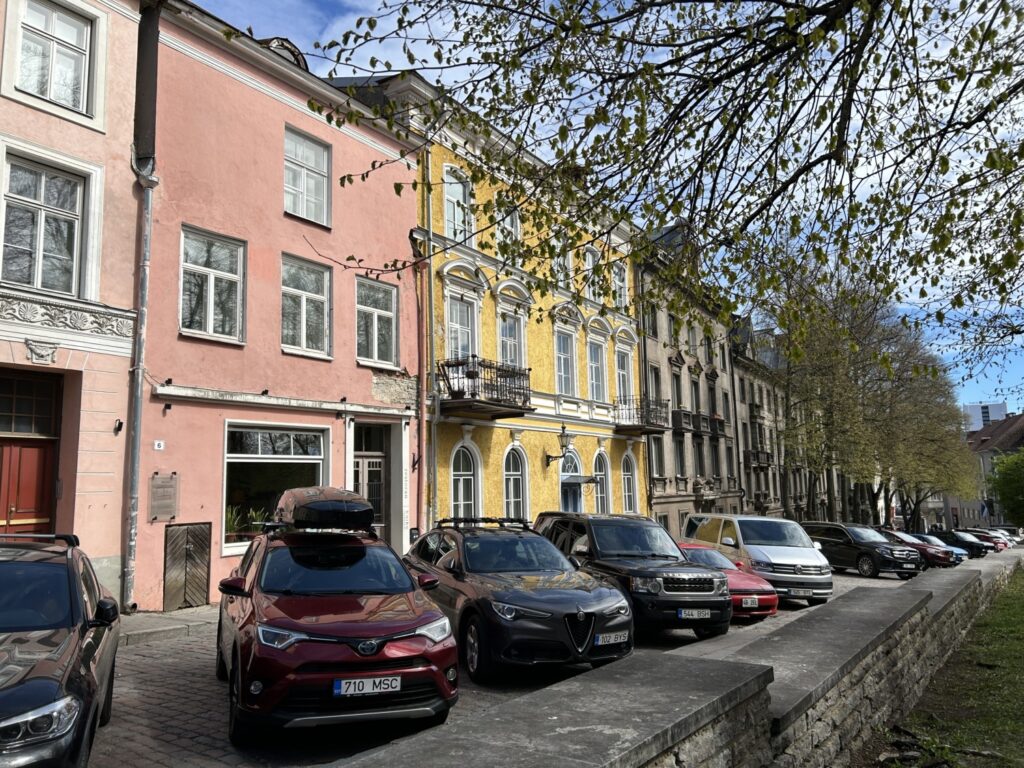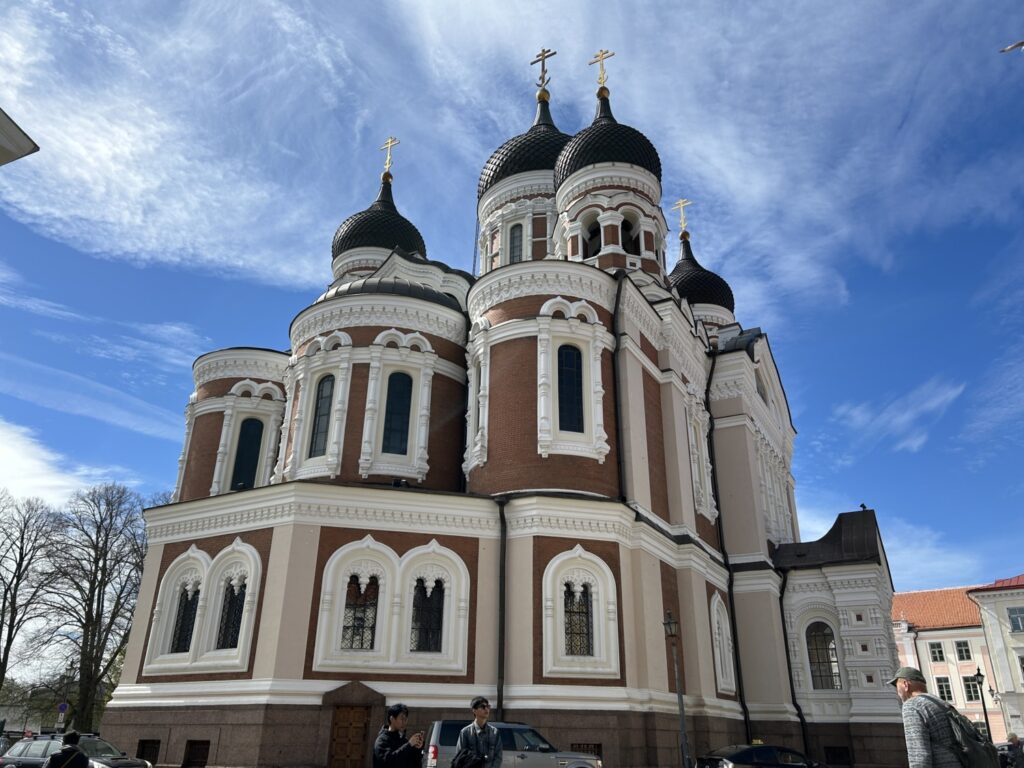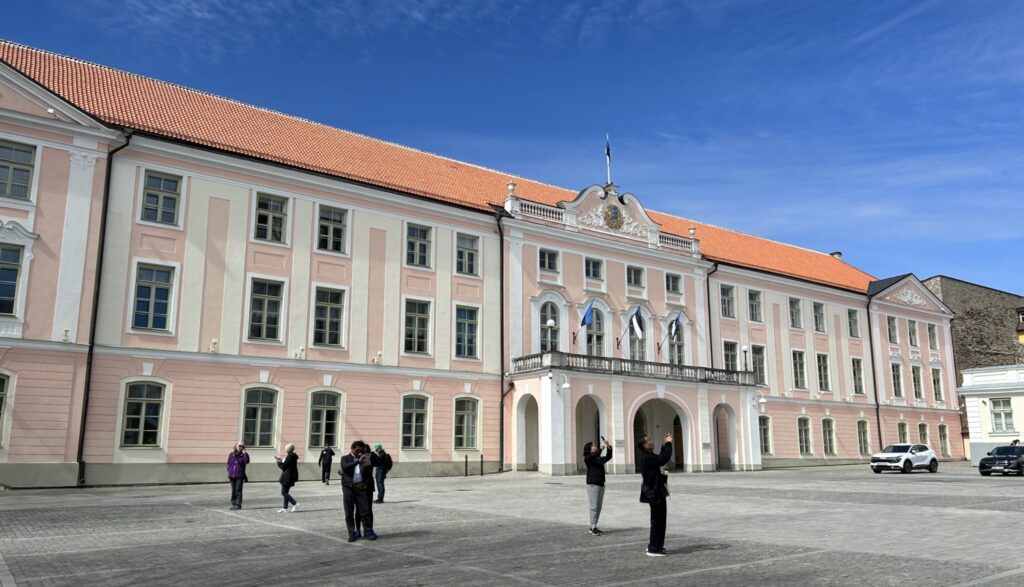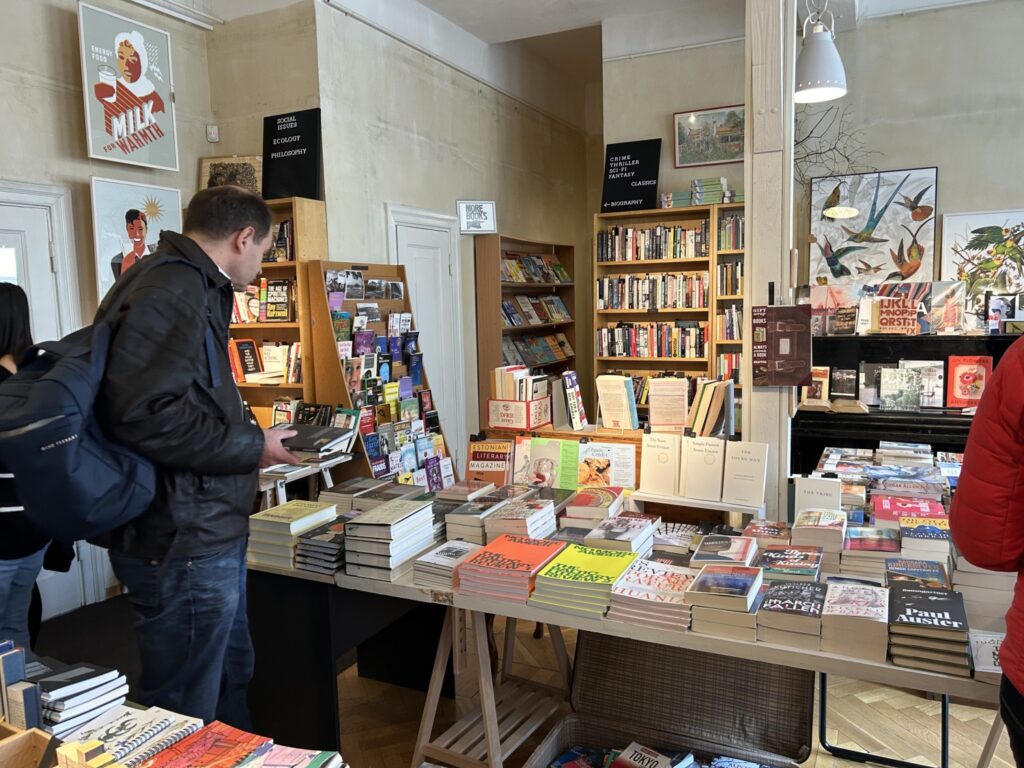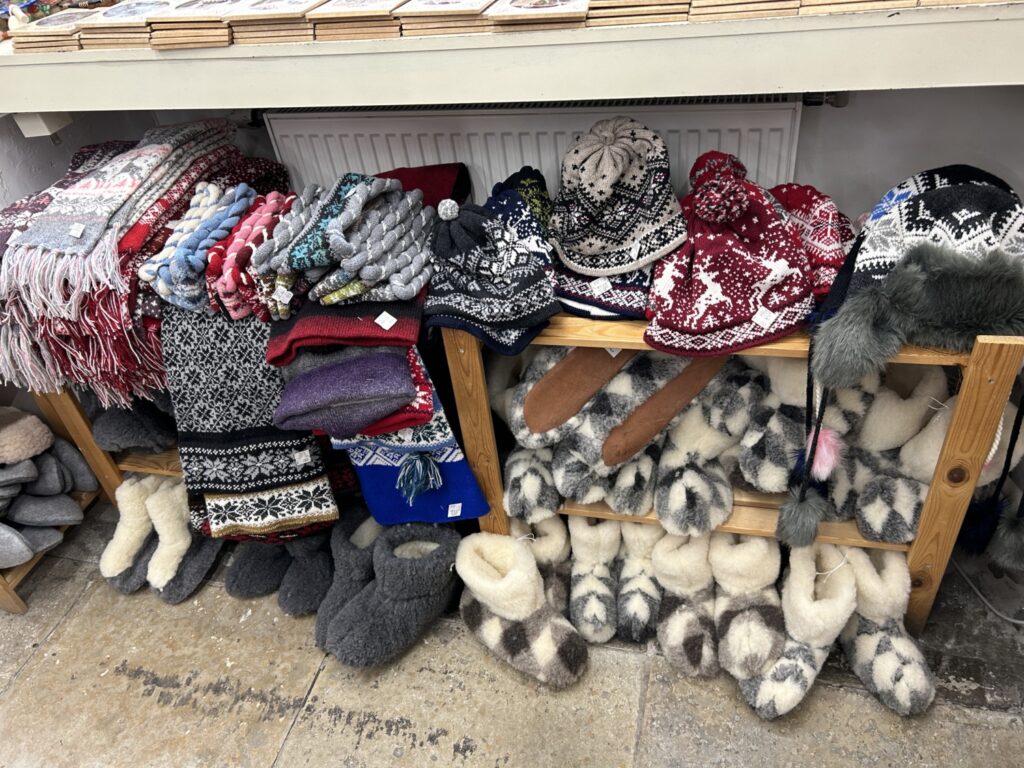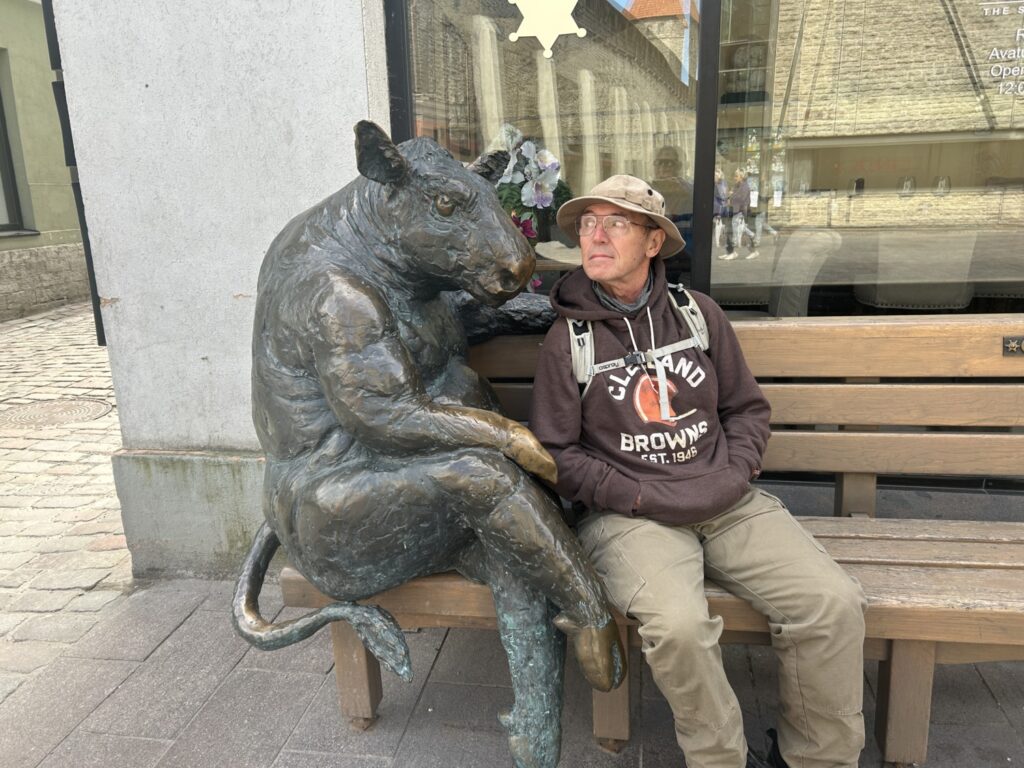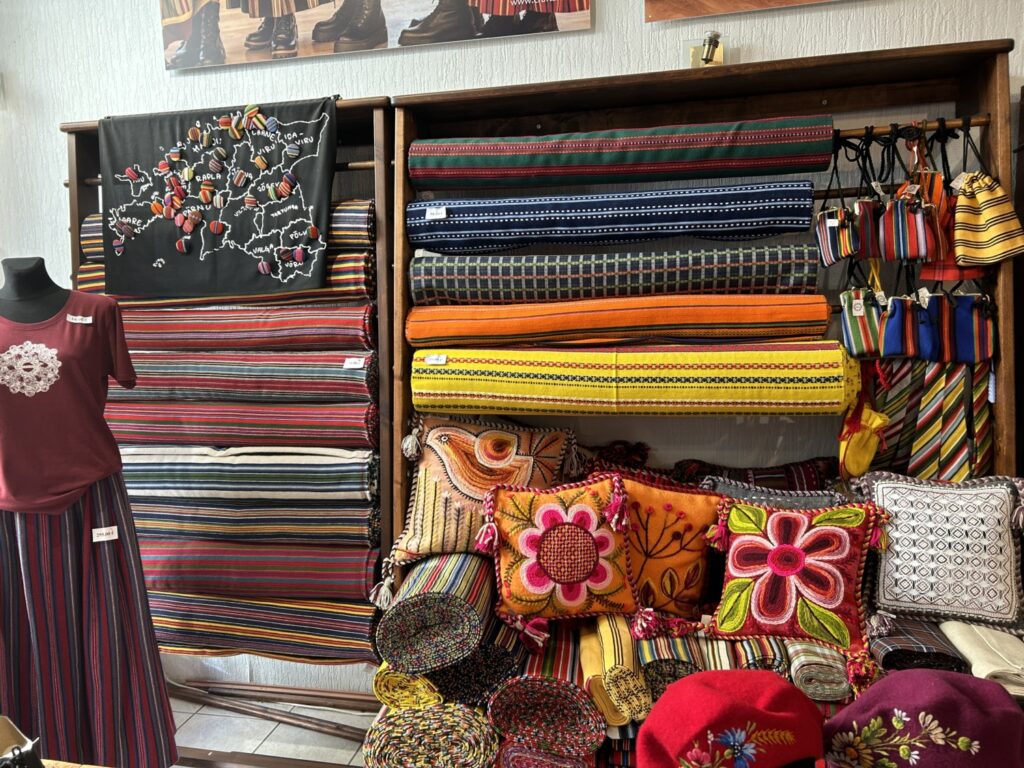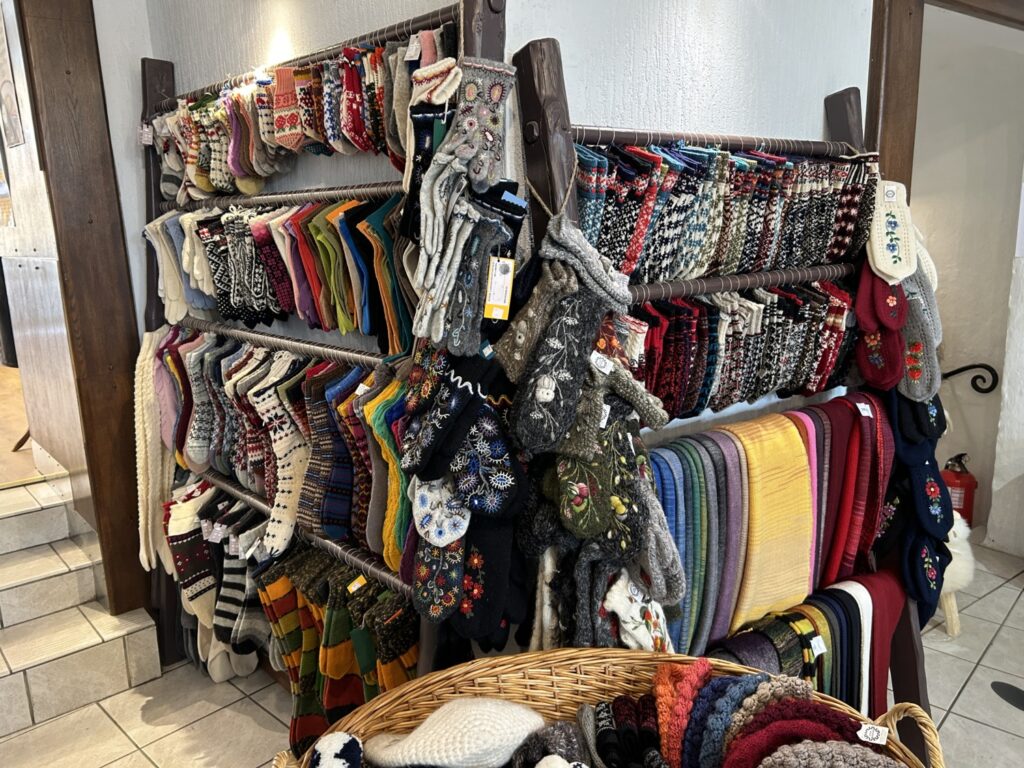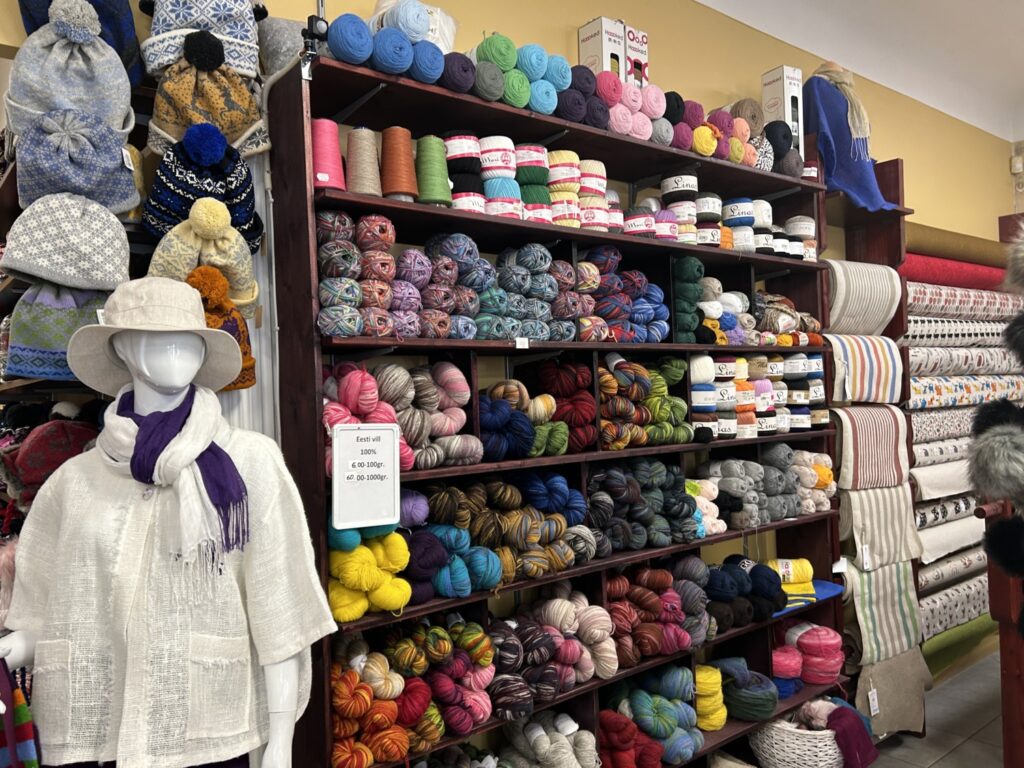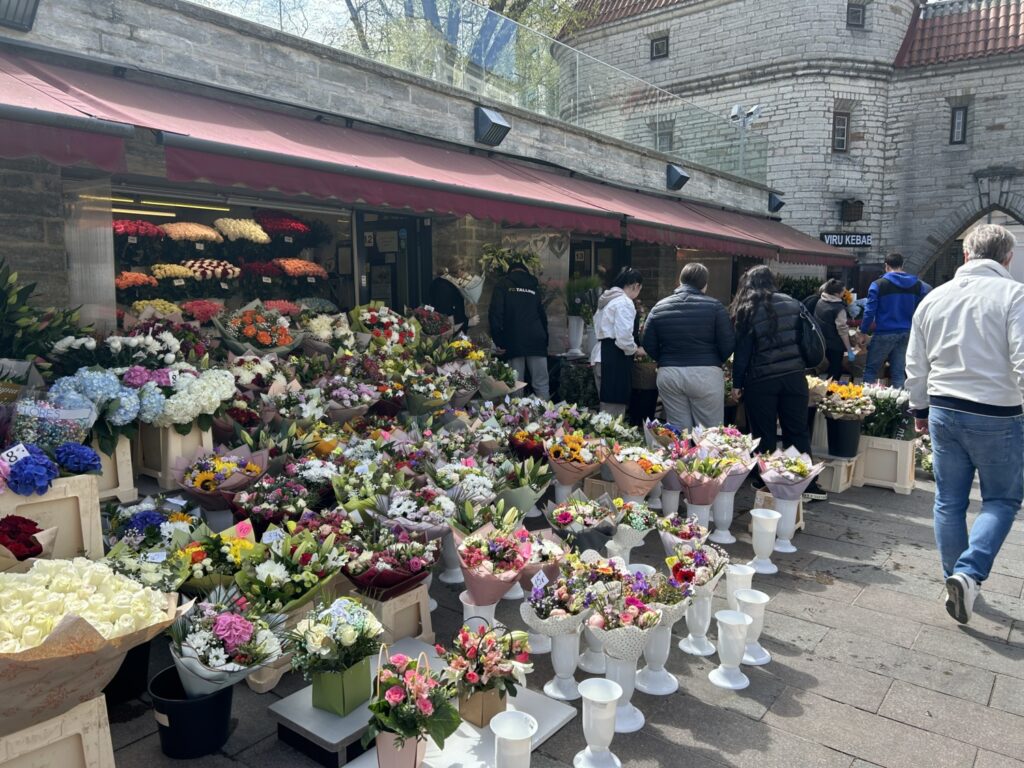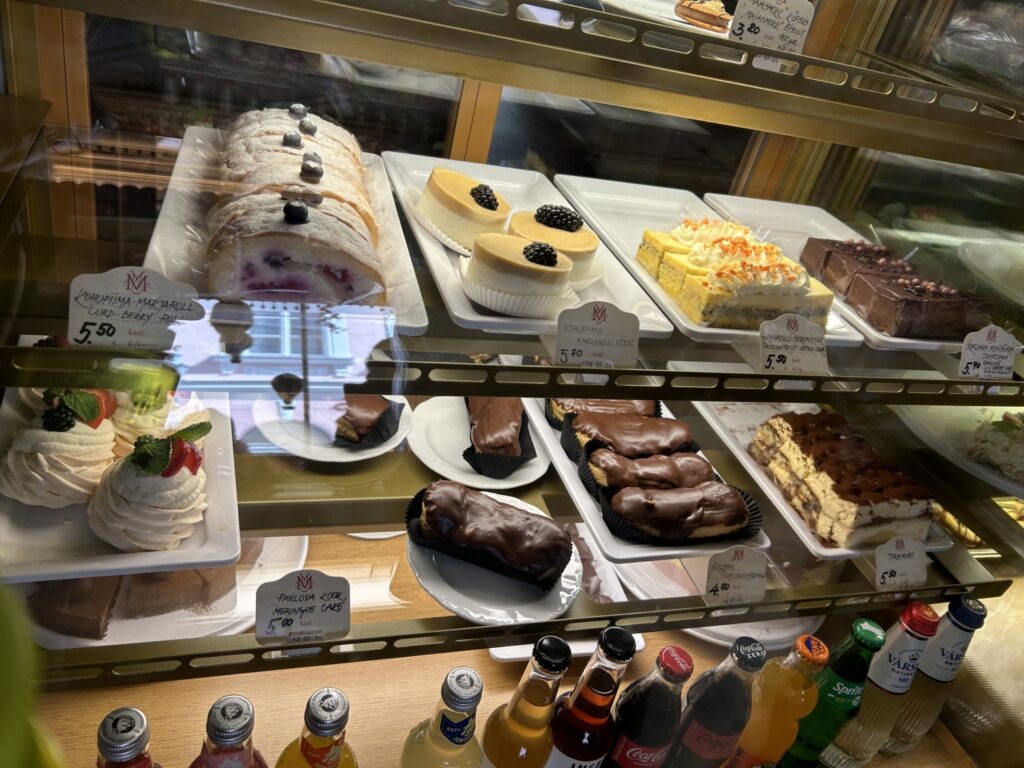When Tom and I saw Tallinn, Estonia on our itinerary for this cruise our main feeling was disappoint that it wasn’t St. Petersburg. We understand why the cruise ships aren’t going to Russia right now, but Estonia wasn’t on my radar. I couldn’t have found it on a map, even if all the countries were labeled. But, having been there, we can say that it is a great place to visit and a country with a very interesting history.
Estonia has always wanted to be its own country, but has rarely had the chance. Because of its location between Russia, the Nordic States, and Europe, it has been overrun by one country after another during most of its history. Estonia had one of the last pagan civilizations in Europe. It wasn’t until the Northern Crusades of the 13th century that it was “Christianized” by the Germans. Basically it was become Catholic or die.
The Germans took over the country in the 13th century, followed by the Danes, the Swedes, and then the Russians. In 1918, Estonia declared itself free which worked until 1940 when it was invaded by the Soviet Union, followed by Nazi Germany, followed by the Soviets again in 1944. Estonia was part of the Soviet Union until 1990, when it again achieved independence from the Soviet Union in a peaceful “singing revolution.” Today Estonia is a developed country with a strong economy. It is a member of the European Union, although it only has a population of 1.4 million.
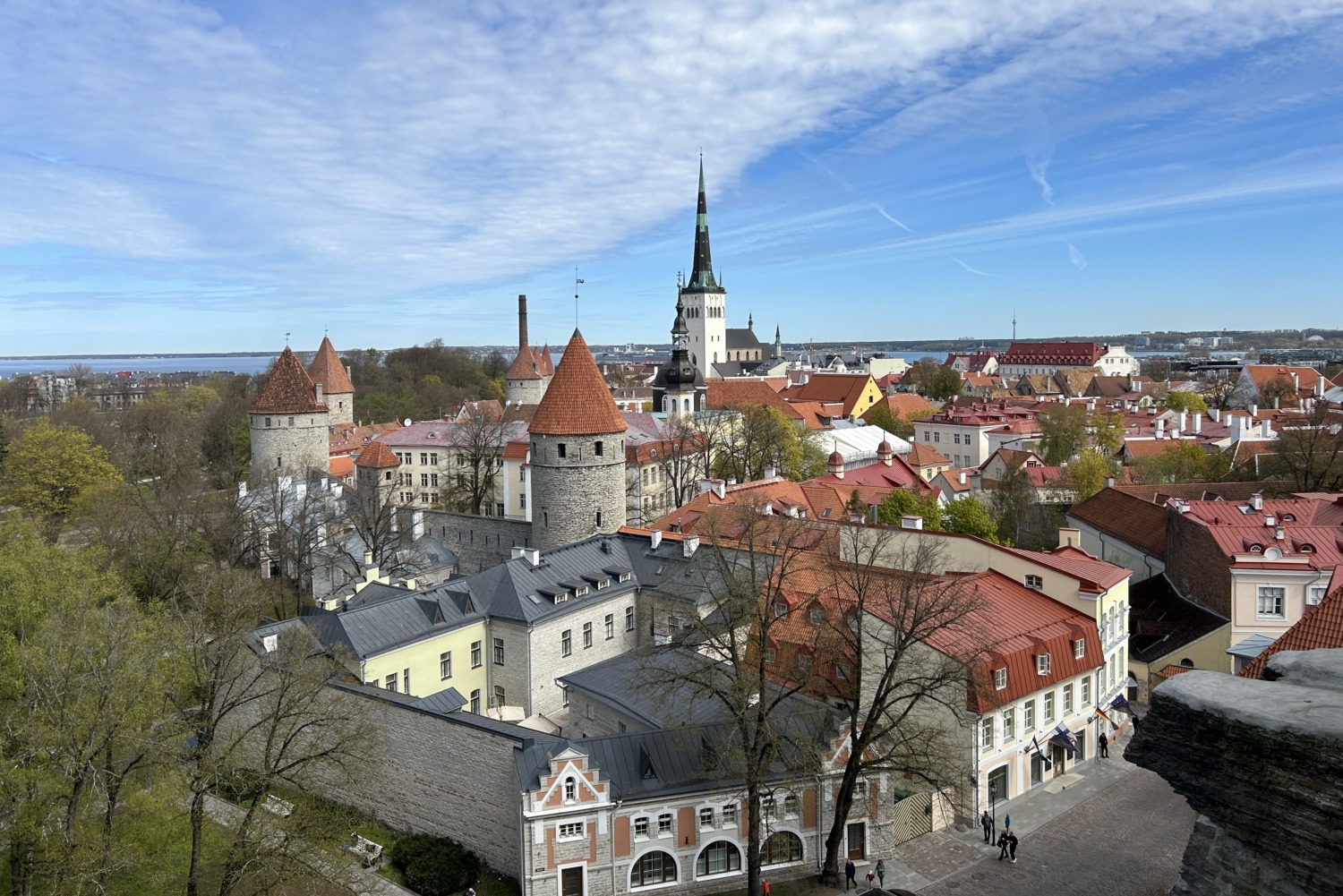
Tallinn was founded in 1248 and was a member of the Hanseatic League. The Hanseatic League was a medieval commercial and defensive network of merchant guilds and market towns in Central and Northern Europe. The League grew from several German towns to 200 settlements across eight modern-day countries, ranging from Estonia in the north and east, to the Netherlands in the west, and extended inland as far as Cologne, the Prussian regions and Kraków, Poland.
The interdependence of the Hanseatic League regulated trade and made it safer to move goods from one location to another. As nationalism grew in different regions, the power of the League declined. From the 1100’s to 1669, however, it was a powerful force in Northern Europe.
Tom and I decided to follow the Rick Steve’s walking tour of Tallinn’s Old Town. The Hanseatic League built a wall around the town for protection starting in 1248. The wall is essentially intact and surrounds the city that grew up inside the wall. The Old Town was declared an UNESCO World Heritage Site in 1997. A great deal of the Old Town remains as it was in the Middle Ages, thanks to the wealth of the town as part of the Hanseatic League. The public buildings, churches, and merchant homes are well-preserved.
We left the ship and walked the short distance to Old Town. The city of Tallinn has excellent signs for us to follow, which helped us get there. They also helped us navigate several construction zones. Once we got to Old Town, it was like stepping back into another century. Everything is beautifully preserved, but the insides of the buildings are modernized. Shops, restaurants, and private homes fill the buildings. Our cruise director told us that the shops were closed on Sunday, the day we were in port. But that was certainly not the case in the Old Town.
Tom and I spent hours exploring the Old Town area. We went in lots of shops and stopped to photograph all the churches, the towers, the walls, and the public buildings. Our favorite place was the Estonian History Museum in the Great Guild Hall. The merchants in Tallinn who were part of the Hanseatic traders built and met in the Guild Hall. We saw an excellent film on Estonian history and learned a lot about the way the Hanseatic League operated. One room was filled with coins, weights and measures, very important to traders and merchants. Tom found a Viking helmet and sword and tried them on. Doesn’t he look like he belongs in the museum display?
When we got hungry we tried some of the local goodies. We had some savory minipankook, which was like a tiny grilled cheese sandwich. Then we split a sausage roll and cheese roll. Everything was very good. Because there are so many shops and restaurants all in the same place, the restaurateurs can be a little aggressive. If we stopped to read a menu, which were conveniently posted, the restauranteur would come over and urge us to have a seat. Everyone spoke English which was very helpful.

The only thing I bought besides food was a demitasse spoon. I looked at lots of other things. Tom had his eye on a felted Viking hat, but couldn’t figure out when he would wear it. I admired lots of the Estonian knitted socks, mittens, and sweaters. But I don’t have much extra room in my suitcase. Tallinn is probably the only place we will see lots of Matryoshka (nesting) dolls on our trip, but they had some beautiful ones.

We didn’t spend much time in the churches. Because it was Sunday, most of them were still having services, even in the afternoon. The outsides were beautiful anyway. Most of the churches are Lutheran, but there is a gorgeous Russian Orthodox Church, built in the early 1900’s. They built it right across from the Toompea Castle, which was the seat of government in Estonia since the 1700’s. We also saw lots of embassies, including a Russian embassy which had protest signs around it. The people of Estonia definitely do not like the Russians or their incursion into Ukraine. I’m sure they are afraid they are next.
Tom and I had a wonderful day in Tallinn. The six hours we spent in the Old Town was just about right to feel like we had really seen it and enjoyed it. The history of the city and the country are fascinating. We especially enjoyed our time hanging out in the Market Square, watching the tourists and the citizens appreciating a beautiful spring day.

